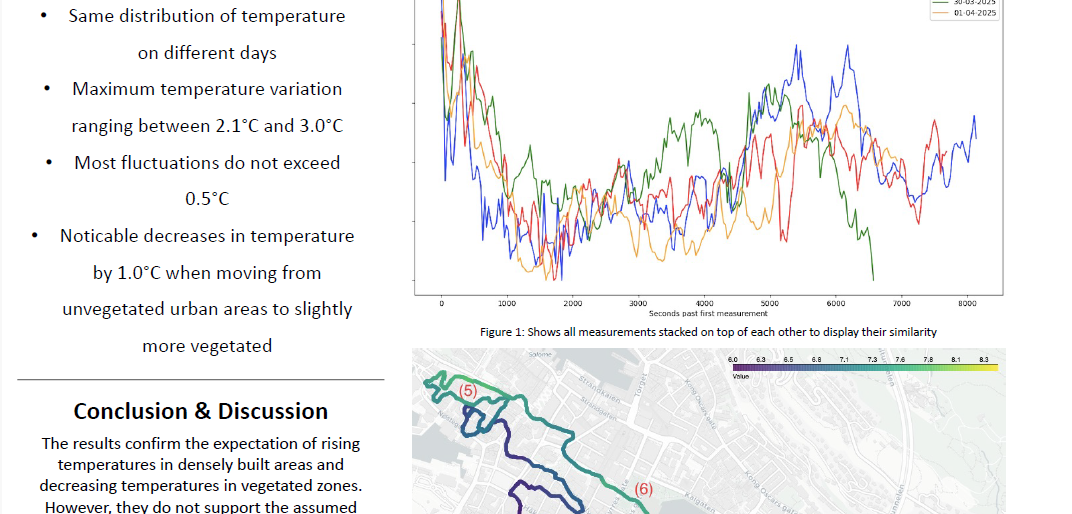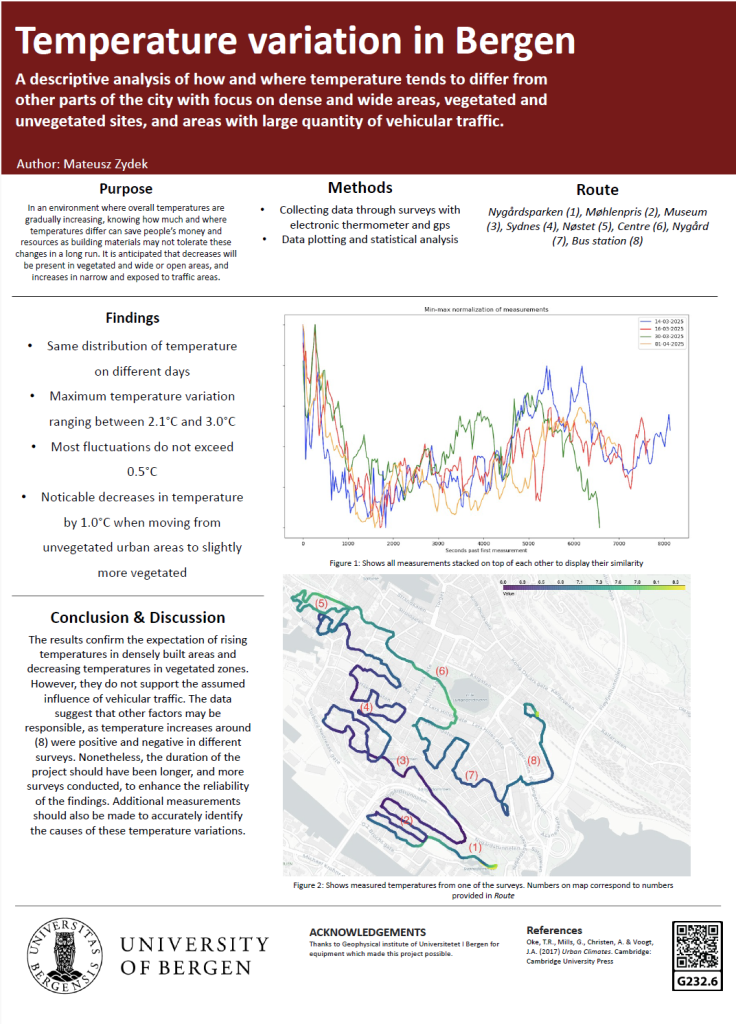Abstract
The purpose of this study was to determine whether temperature varies across different districts of Bergen, and if so, to what extent and due to which factors. Many cities in Europe struggle with the accumulation of trapped heat resulting from vehicular traffic and human activity; consequently, temperatures may differ within a city and cause damage to infrastructure. To facilitate this study, a manual measurement approach was employed in the form of surveys. A total of four surveys were conducted across areas characterized as dense, wide, green, and exposed to vehicular traffic, with varying levels of sunlight exposure.
These surveys provided a clear picture of temperature tendencies in specific locations and demonstrated that temperature variations are not constant but may depend on several factors, such as the overall ambient temperature. In these surveys, the recorded maximum temperature variations ranged from 2.1°C to 3.0°C, although most fluctuations in temperature trends did not exceed 0.5°C. Regardless of whether the general temperature trend was positive or negative, small variations were observed whenever a location transitioned from shaded to sunlit conditions or vice versa. In one instance, moving from a dense urban area to a wide, green area with significant tree coverage resulted in a temperature decrease of approximately 1.0°C.
The study's quantitative, descriptive approach shows that temperature variations within Bergen are moderate, and that the main contributing factors to these variations are exposure to sunlight, street width, and the amount of vegetation present in an area.


